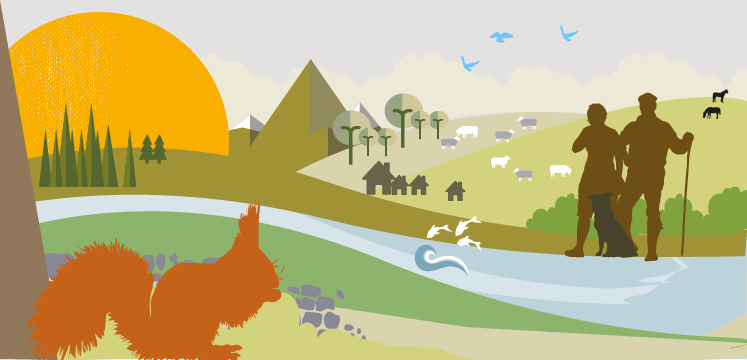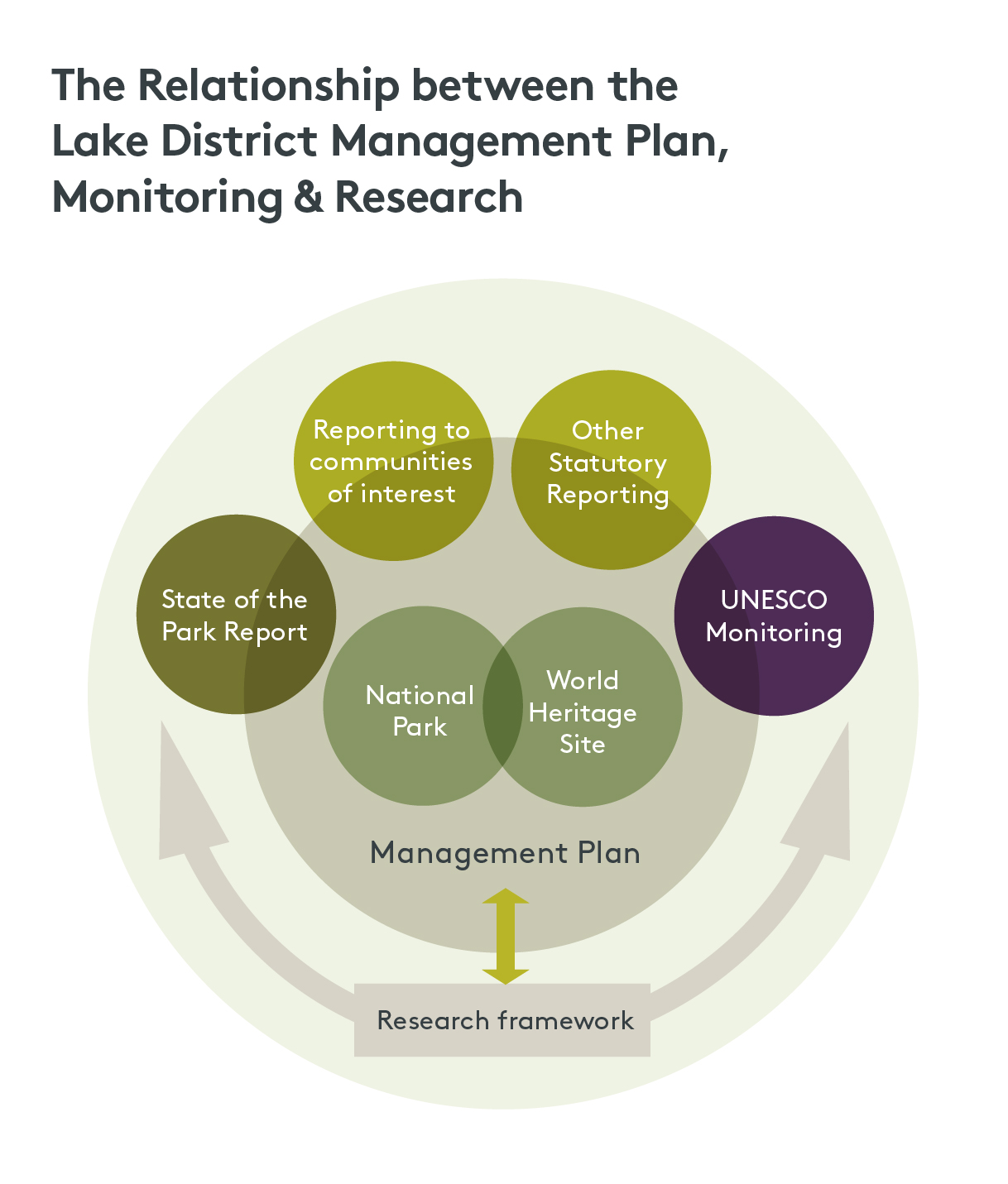
Monitoring is an essential element of resource management. Our Plan includes details of monitoring which will grow our understanding of the Lake District (what do we have now), the regular measurement of indicators to monitor its condition, and enable us to evaluate the progress towards meeting the ambition we have set in this Plan.
Understanding the quantity of a resource and its quality allows effective management to sustain, improve and develop those aspects desired and to address, eliminate or suppress those which are not. It allows managers to recognise where demand is, and who or what supply, can support that need. Most importantly, monitoring also allows us to check our activity is effective and if not, indicates where we may need to change tactics to reach our desired result.
The State of the Park report is the main document which reports upon the Special Qualities (and where possible the attributes of Outstanding Universal Value of World Heritage status) of the English Lake District in response to the Lake District Partnership’s monitoring framework. The most recent and comprehensive version was published in November 2023 through our collaborative efforts using secondary data gathered for a range of other purposes. The State of the Park reports are designed to summarise and present key findings for consideration to feed into Management Plans. This Management Plan is the product of the State of the Park report, amongst other drivers, and that we will use monitoring to measure how effectively we are achieving our objectives using a series of indicators. The State of the Park report also identified number of gaps and flaws in our monitoring; for example, the condition of the high fells, and there was no data on the habitat quantity and quality outside formally recognised protected areas. Recent work by the World Heritage Site Technical Advisory Group has identified priorities for monitoring and gaps in our information regarding the condition of some of our attributes of Outstanding Universal Value and this has input into the research framework.

The Relationship between the Lake District Management Plan, Monitoring and Research
The evaluation phase is crucial as it allows us to check if our management regime is working. Generally we seek improvement in a phenomenon, sometimes we want it to remain static and other times it would be nice to see a decline. For example:
When something is not how we want it, research is conducted, however small or short, to understand the problem and why things are going wrong. In this way we can re-direct our management to resolve the challenge. Sometimes we do not understand why things are going wrong, thus longer more complex research is needed to unpick the issue and rectify the problems, hence the new research framework.
We will continue to monitor the Special Qualities and attributes of Outstanding Universal Value using indicators and standards. We are in the process of identifying indicators and corresponding standards which could be used monitor progress on the key challenges.
Monitoring of the condition of the World Heritage Site (State of Conservation) includes the protection of our Outstanding Universal Value. The protection of our Outstanding Universal Value is a mandatory requirement set out by UNESCO within the convention (UNESCO Convention of the Protection of World Natural and Cultural Heritage of 1972) and is the focus for monitoring of the World Heritage Site. UNESCO monitors the State of Conservation of each World Heritage Site through its Periodic Reporting process.
We have highlighted three priorities for monitoring of our attributes to sustain our Outstanding Universal Value in the short term due to current circumstances; these are:
We recognise the other attributes will need to be monitored in the long term and as part of the periodic review. We will seek to use similar monitoring mechanisms as described under the Research Framework.
Further information showing how UNESCO recommendations have been incorporated into the Plan summarise how this Plan will address the issues raised in the Technical Reviews from ICOMOS including where additional monitoring is required.
Monitoring the implementation of transformative actions is identified in our key indicators, and we continue to develop and finalise our Monitoring Plan to identify the indicators to monitor delivery, how the strategies are supporting the Vision, State of the Park, and other reporting.